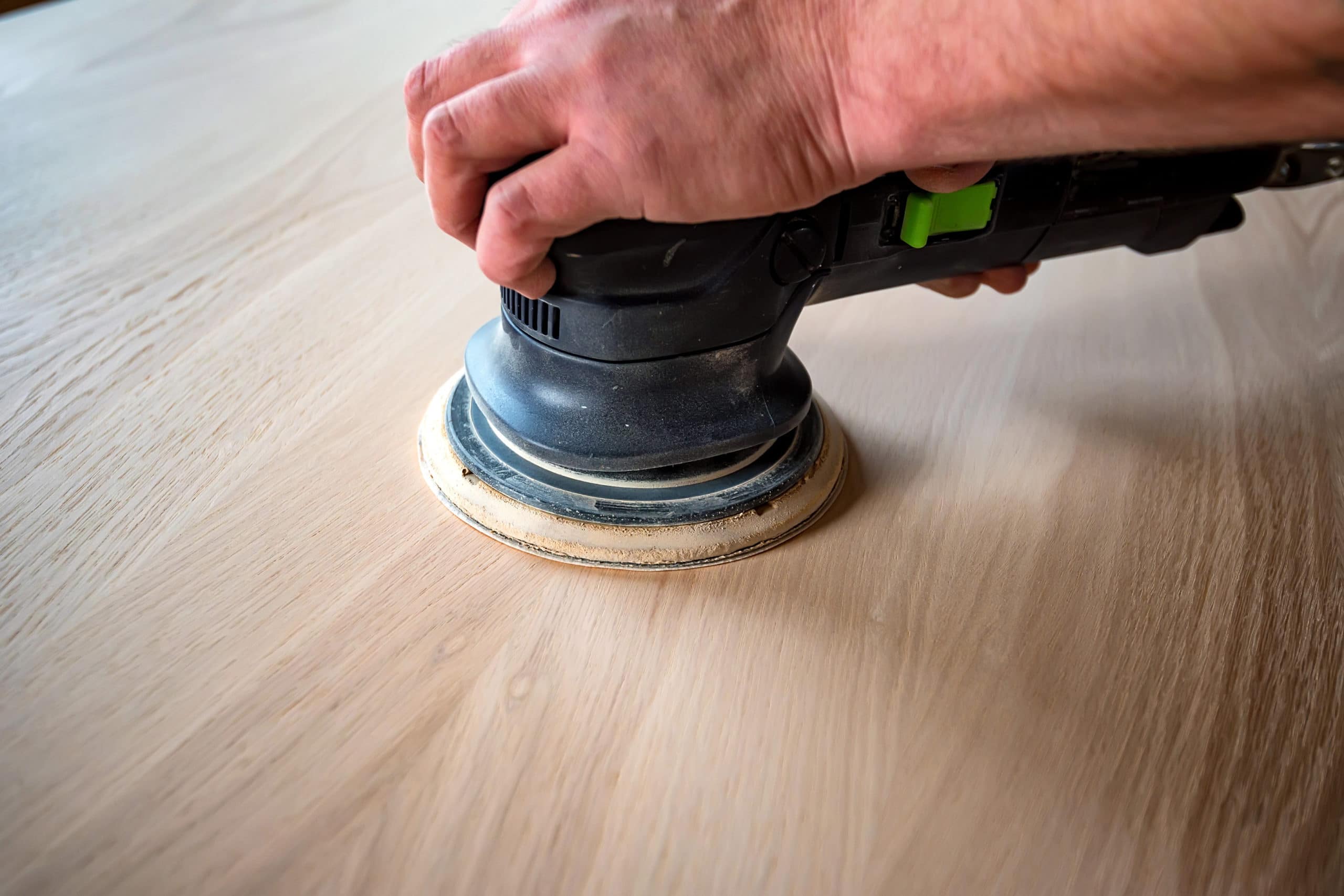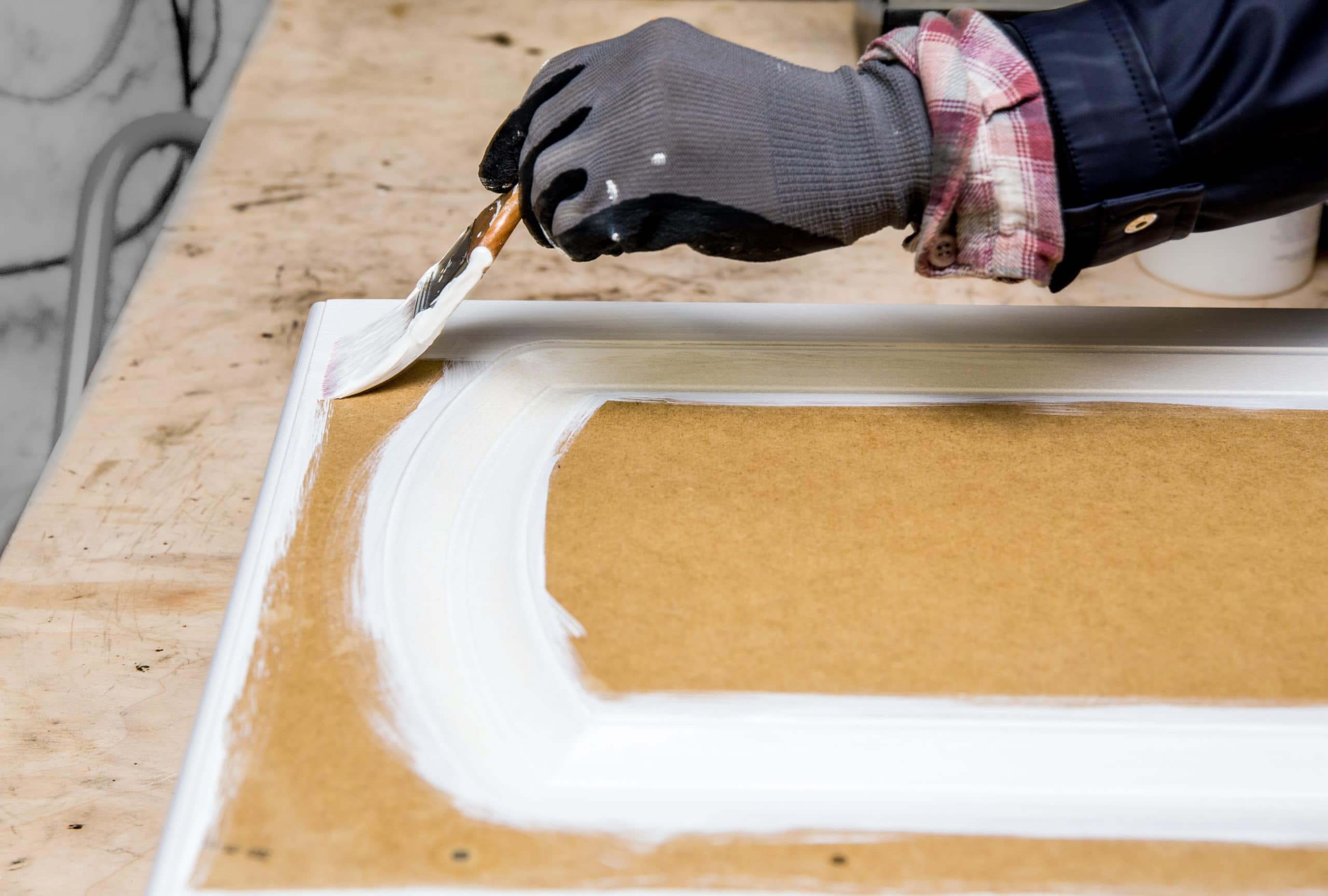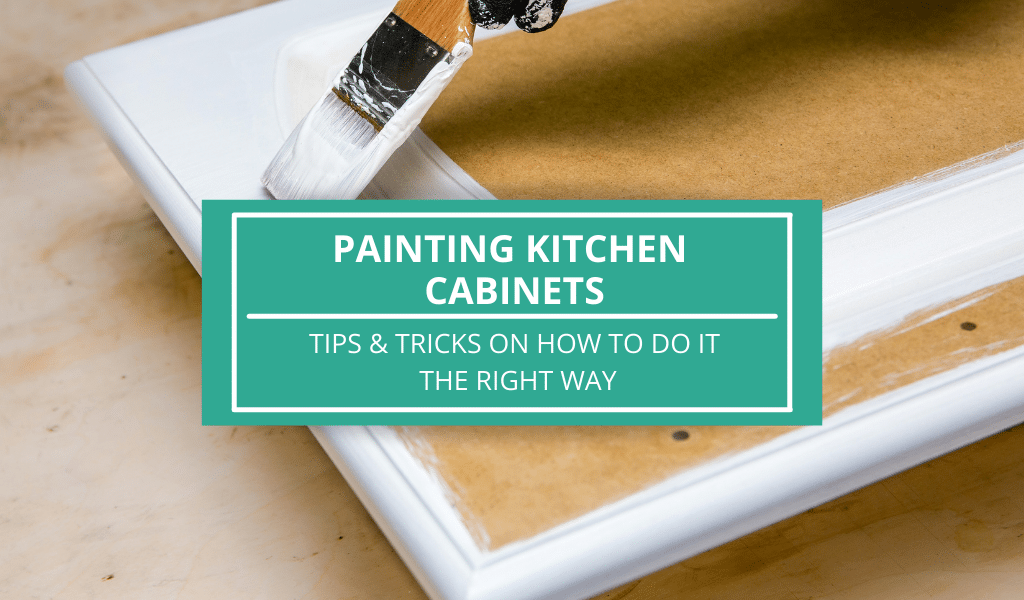Nothing says a house is old like walking into the kitchen to have many cabinets that are either out of style or clash with other colors. Many people that buy new homes almost immediately want to repaint all the kitchen cabinets but doing it the right way may be harder than you think.
You will need to ensure that the cabinets are worth saving and made out of materials that can be painted. You must sand the smooth surfaces, clean everything, prime most surfaces, and then apply the layers of paint that you have chosen for the new look you want in your kitchen. (Source: This Old House)
You will need to learn several things to paint the cabinets you have throughout your kitchen correctly. Often, you will not be able to paint them, with an extensive amount of preparation required, knowing all the necessary things during the planning stages is the best.
What Is The Best Paint To Use On Kitchen Cabinets?
Contrary to what many people would like to believe, you cannot simply use whichever paint you have in the garage to start painting the cabinets in your home. Not only can these paints have trouble adhering to the cabinets, they can leak toxic fumes into the kitchen and onto your kitchen products.
Generally speaking, we know three paints are safe to use on your kitchen cabinets simply because they have little to no long-term leakage. These paints are either safe straight out of the box or can cure so that they do not let off fumes or substances once dried.
(Source: DIY Painting Tips)
Water-Based PVA (Polyvinyl Acetate)
Water-based PVA is the do-it-yourself champion paint that everyone will most likely be able to find easily; this paint is low cost and easy to use. The best PVA paint for your kitchen cabinets will be water-based, allowing your kitchen cabinets to quickly soak them up and stay the color you have chosen.
It is important to remember that water-based PVA, once dried, is a paint that is usually absorbed into the wood of the cabinets you are painting. This is why they are kitchen safe since the wood has absorbed everything and will not let out any fumes as these dried out during the curing process.
Acrylic
A lot more expensive than PVA, but coming in some mixtures of PVA, acrylic is what we will recommend using if you want a more consistent color. Acrylic paints are thicker than standard PVA, creating a thick layer of paint instead of being absorbed by the wood.
However, despite the higher cost and the way it cures on the wood of your cabinets, acrylic paint is a lot hardier than water-based PVA. This means that it will not scratch as easily and will not fade over time, usually being able to also last longer when exposed to sunshine.
Enamel
The best paint for your kitchen cabinets, enamel paints are thicker paints that dries in a smoother finish, giving you cabinets that look professionally done. Usually, enamel paint is exactly what professionals will use and should be oil-based, giving the paint the chance to stay wet for longer.
It should be noted that while oil paints have been getting a bad reputation in the last few years because of their Volatile Organic Compounds (VOC), newer paints are not like this. There are several enamel oil paints that are made explicitly for kitchens that have little to no VOCs in them, called hybrid enamels.
Can You Paint Cabinets Without Sanding?
Yes, you can paint most kitchen cabinets without sanding them down; first, most priming paint will create a stable and complete connection with the paint. However, it should be noted that when you are not sanding the cabinets, there is a higher chance that the paint will peel.

Wooden cabinets are much less likely to need sanding as their surfaces are usually quite rough already unless they have already been painted. Many people are confused about sanding, to begin with, which causes a lot of issues when the cabinets start to age.
Sanding is done for two main reasons: to roughen the surface up, giving the paint something to grab onto and bind with. The second reason is to smoothen down any imperfections; a small scratch or a bump in the wood needs to be sanded down to get the best possible finish for the paint.
Is Painting Kitchen Cabinets A Good Idea?
Yes, painting your kitchen cabinets is always a good idea if you are unhappy with their current look. Painting kitchen cabinets has long been one of the best and easiest ways to breathe new life into a kitchen that may feel old or simply out of style with the rest of your house.
A mistake made by many first-time homeowners when they are unhappy about their current kitchen cabinets is stressing about replacing them entirely. However, with a few buckets of paint and two or three weekends of work, the entire feel of a kitchen can be upgraded with paint.
Many times, this is where the upgrade to a home will start, with homeowners removing and upgrading the kitchen cabinets. Instead of replacing them entirely, adding a fresh coat of paint and installing new countertops is an easy way to transform a house completely.
What Will You Need To Do Before Painting Kitchen Cabinets?
If it were an easy and fast process to repaint all of your kitchen cabinets to make them look professionally done, everyone would do it. You need to take several steps when you are going to repaint your kitchen cabinets, each one important to getting the best final results.
We have seen many people assume that all you have to do is throw a few coats of paint onto the cabinets and let it all dry out. However, with kitchen cabinets, you need to do it correctly the first time you do it, or else you may end up spending three times the budgeted amount trying to fix simple mistakes.
(Source: WikiHow, Own experience in painting and woodworking)
Check Cabinet Quality: This is the first and most crucial part that we always tell people before beginning the process. Checking the quality of the current cabinets can often reveal shoddy construction and swelled wood that means you need to replace them anyway.
Cleaning: If your cabinets are in good quality and have been removed from the wall, you will need to start cleaning them. You cannot have any oil spots, stains, or foreign materials on the wood later when you start painting the cabinet.
Sanding: The first round of sanding is the most important; once done with this layer of sanding, it needs to be only the layer of old paint or wood of the cabinets. Removing any dents and scratches that may be on the wood of the cabinets.
Cleaning: Before applying the first layer of primer or paint, you will need to clean every cabinet again. Removing all the sanding dust that has been created while you were getting every surface ready for painting.
Taping: Your painting hand cannot move in perfectly straight lines, and there will be areas of the cabinets that should not be painted. Taping off the inside edges of the cabinets as well as other areas that need to stay unpainted will give that perfect finish.
Priming: A primer paint is the best possible way to get the surface ready to be painted on and will help your chosen colors pop more. Priming only requires one layer to be applied and will usually go on rather thick, wait to dry completely before proceeding.
Sanding: Most guides will tell you this is unnecessary, as they are made by people who are also still learning how to paint. When the primer was applied, the wood absorbed the paint and causes a rougher surface to develop, giving the primed surface a light sanding with 1000 or more grit sandpaper will ensure a perfectly smooth surface.
Painting: This is the part where you will need to have a steady and sure hand to make sure that everything is going perfectly. You can use a brush or roller to apply the paint of your choice, and you should be applying at least two layers for the color to be thick enough.
Peeling & Drying: Once you have applied your final layer, you need to wait around 5 minutes for the paint to settle, then start peeling the tape. Wet paint will not crack and makes a cleaner line; after everything has been peeled, leave for at least 12 hours to ensure minimum paint smell.
What Surfaces Can Actually Be Painted?
Before you start painting and going crazy in painting your kitchen cabinets, you will need to know whether you will even be able to paint them. Many people assume that all kitchen cabinets are the same and will be easy to paint; however, this is not the truth.
Generally, there are three types of kitchen cabinets that we would recommend painting, as others may be too complicated or difficult to paint. Many kitchens have been completely ruined simply because the mistake was made in assuming anything can be painted.
Wood Cabinets

All modern cabinets in lower class to even upper-class homes will be made of some type of wood, either compressed, pine, or some other type. These are usually the cabinets that can be painted with absolute ease as these are the standard that can be found everywhere.
It should be noted that there is a difference between solid wood cabinets and regular compressed wood combination cabinets. Usually, solid wood cabinets will be extremely old and stained rather than already painted a specific color.
Veneer
A veneer is a surfacing technique in which thin strips of plastic, vinyl, or more expensive wood is stuck onto compressed wood. Usually, this is what you will be dealing with in modern homes as they are a lot less expensive and lightweight, making for perfect kitchen cabinet material.
Once sanded down to a rough surface, almost any veneer can be painted on, as they are almost made to be covered up once they start becoming ugly. However, it should be noted that veneers can and will start peeling with age, even if you have applied the best paint job in the world.
What Surfaces Should Never Be Painted?
Now that we know which surfaces can be painted with absolute ease, you will need to know when kitchen cabinet materials cannot simply be painted over. You will usually see people that have these cabinets either having older homes or having extremely well-crafted kitchens.
Many times, people that are looking for a quick and easy DIY way to paint their kitchen cabinets will not have one of these. However, in the rare chance that you have one of these materials in your kitchen, you need to know how to handle them, as painting will usually not be successful.
Rock, Stone, Or Cement
It may seem impossible, but there are many homes around the world that have solid rock cabinets in their kitchens. Usually with the main structure of the cabinet being made out of the hard material, while the doors are made out of wood or other softer materials.
These cabinets are part of the house's structure and require entirely different processes to be painted, sometimes not being paintable at all. Instead, you may want to save up money and remove these completely and then install new kitchen cabinets that are in the style you desire.
Solid Wood
When we talk about solid wood kitchen cabinets, we do not mean the door is solid wood, and the rest of the cabinet is from less expensive wood. Instead, these solid wood cabinets are much older and are usually made from one specific type of wood, probably stained to be dark.
These kitchen cabinets are often actual historical pieces of wood furniture that was normal for homes to have up to the late 1800s. You can sand and paint these, but you will most likely be able to make enough profit from selling them to redo most of your kitchen, though it takes an expert eye to identify them.
Metal
In general, you will need to use a special type of paint to paint on any type of metal surface; with kitchen cabinets usually made out of steel, you cannot use water-based paints. Further, paint for metal and steel surfaces has special properties that ensure the metal does not rust.
We also need to point out that metal kitchen cabinets are usually enameled in a different process than simply using enamel paints. These cabinets are painted and then heated to extreme temperatures, melting the paint onto the surfaces, which has made them highly collectible.
Final Thoughts
Painting your own kitchen cabinets is something that can be done with some ease if you have all the right tools and paints. You will need to follow a few basic steps to ensure that everything is finished properly and that the final product is smooth and safe to use in your kitchen.
Whatever you do, please don't assume that the paint for the roof will be perfect for your kitchen!

